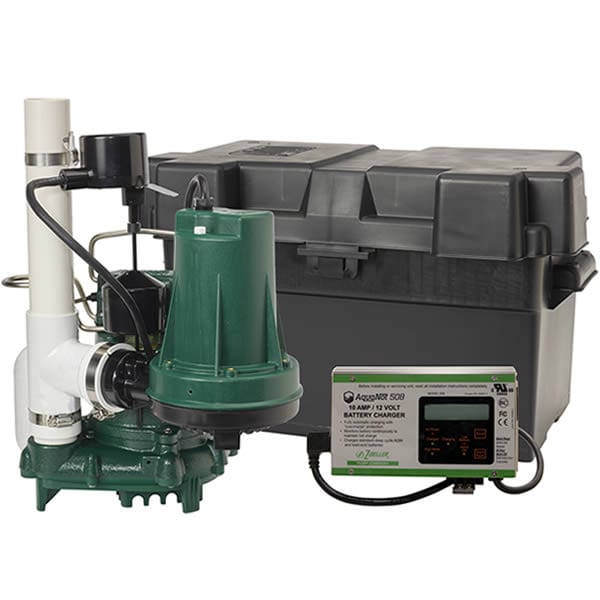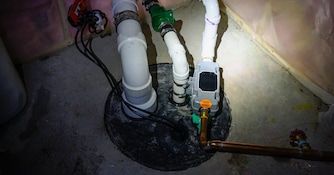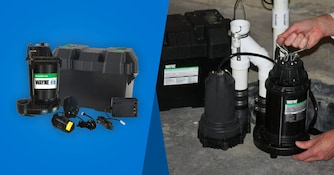
{"storeInfo":{"id":10,"name":"Sump Pumps Direct","domain":"sumppumpsdirect.com","initials":"SPD","url":"https:\/\/www.sumppumpsdirect.com","path":"\/var\/www\/vhosts\/spd.com\/"},"headerNavJSON":"{\"MainLinks\":[{\"URL\":\"\\\/pumps\\\/primary-sump-pumps.html\",\"displayText\":\"Primary Sump Pumps\",\"sectionLinks\":{\"columns\":\"6\",\"linkItems\":[{\"URL\":\"\\\/pumps\\\/primary-submersible-sump-pumps.html\",\"imageURL\":\"\\\/nav-image\\\/100\\\/primary-10-1.jpg\",\"displayText\":\"Submersible\"},{\"URL\":\"\\\/pumps\\\/primary-pedestal-sump-pumps.html\",\"imageURL\":\"\\\/nav-image\\\/100\\\/primary-10-2.jpg\",\"displayText\":\"Pedestal\"},{\"URL\":\"\\\/pumps\\\/automatic-sump-pumps.html\",\"imageURL\":\"\\\/nav-image\\\/100\\\/primary-10-3.jpg\",\"displayText\":\"Automatic\"},{\"URL\":\"\\\/pumps\\\/cast-iron-sump-pumps.html\",\"imageURL\":\"\\\/nav-image\\\/100\\\/primary-10-4.jpg\",\"displayText\":\"Cast Iron\"},{\"URL\":\"\\\/pumps\\\/primary-sump-pump-systems.html\",\"imageURL\":\"\\\/nav-image\\\/100\\\/Primary Sump Pump Systems_8ebf3892b0c369568c5c25bae78f4227.jpg\",\"displayText\":\"Systems\"}]},\"subCategories\":[{\"URL\":null,\"type\":\"list\",\"title\":\"Popular Brands\",\"linkItems\":[{\"URL\":\"\\\/pumps\\\/zoeller-primary-sump-pumps.html\",\"displayText\":\"Zoeller\"},{\"URL\":\"\\\/pumps\\\/wayne-primary-sump-pumps.html\",\"displayText\":\"Wayne\"},{\"URL\":\"\\\/pumps\\\/liberty-pumps-primary-sump-pumps.html\",\"displayText\":\"Liberty Pumps\"},{\"URL\":\"\\\/pumps\\\/little-giant-primary-sump-pumps.html\",\"displayText\":\"Little Giant\"},{\"URL\":\"\\\/pumps\\\/ion-primary-sump-pumps.html\",\"displayText\":\"iON\"}]},{\"URL\":null,\"type\":\"list\",\"title\":\"Shop by HP\",\"linkItems\":[{\"URL\":\"\\\/pumps\\\/1-4-hp-primary-sump-pumps.html\",\"displayText\":\"1\\\/4 HP\"},{\"URL\":\"\\\/pumps\\\/1-3-hp-primary-sump-pumps.html\",\"displayText\":\"1\\\/3 HP\"},{\"URL\":\"\\\/pumps\\\/1-2-hp-primary-sump-pumps.html\",\"displayText\":\"1\\\/2 HP\"},{\"URL\":\"\\\/pumps\\\/3-4-hp-primary-sump-pumps.html\",\"displayText\":\"3\\\/4 HP\"},{\"URL\":\"\\\/pumps\\\/1-hp-primary-sump-pumps.html\",\"displayText\":\"1 HP\"}]},{\"URL\":null,\"type\":\"list\",\"title\":\"Popular Categories\",\"linkItems\":[{\"URL\":\"\\\/pumps\\\/crawl-space-sump-pumps.html\",\"displayText\":\"Crawl Space\"},{\"URL\":\"\\\/pumps\\\/duplex-sump-pumps.html\",\"displayText\":\"Duplex\"},{\"URL\":\"\\\/pumps\\\/elevator-sump-pumps.html\",\"displayText\":\"Elevator\"},{\"URL\":\"\\\/pumps\\\/non-automatic-sump-pumps.html\",\"displayText\":\"Non-Automatic\"},{\"URL\":\"\\\/pumps\\\/laundry-drain-pump-systems.html\",\"displayText\":\"Laundry\\\/Sink\"}]},{\"URL\":\"\\\/stories\\\/335-How-to-Pick-the-Perfect-Primary-Sump-Pump.html\",\"type\":\"image\",\"title\":\"Buyer's Guide\",\"imageURL\":\"\\\/nav-article-image\\\/305\\\/social_img_335.jpg\",\"linkItems\":[],\"displayText\":\"Primary Sump Pump Buyer's Guide: 2 Types to Know\"}]},{\"URL\":\"\\\/pumps\\\/combination-sump-pump-systems.html\",\"displayText\":\"Combination Sump Pumps\",\"sectionLinks\":{\"columns\":\"6\",\"linkItems\":[{\"URL\":\"\\\/pumps\\\/1-3-hp-combination-sump-pumps.html\",\"imageURL\":\"\\\/nav-image\\\/100\\\/combination-10-1.jpg\",\"displayText\":\"1\\\/3 HP\"},{\"URL\":\"\\\/pumps\\\/1-2-hp-combination-sump-pumps.html\",\"imageURL\":\"\\\/nav-image\\\/100\\\/combination-10-2.jpg\",\"displayText\":\"1\\\/2 HP\"},{\"URL\":\"\\\/pumps\\\/3-4-hp-combination-sump-pumps.html\",\"imageURL\":\"\\\/nav-image\\\/100\\\/combination-10-3.jpg\",\"displayText\":\"3\\\/4 HP\"},{\"URL\":\"\\\/pumps\\\/2000-2999-gph-combination-sump-pump-systems.html\",\"imageURL\":\"\\\/nav-image\\\/100\\\/combination-10-4.jpg\",\"displayText\":\"2,000 - 2,999 GPH\"},{\"URL\":\"\\\/pumps\\\/3000-3999-gph-combination-sump-pump-systems.html\",\"imageURL\":\"\\\/nav-image\\\/100\\\/combination-10-5.jpg\",\"displayText\":\"3,000 - 3,999 GPH\"},{\"URL\":\"\\\/pumps\\\/4000-4999-gph-combination-sump-pump-systems.html\",\"imageURL\":\"\\\/nav-image\\\/100\\\/combination-10-6.jpg\",\"displayText\":\"4,000 - 4,999 GPH\"}]},\"subCategories\":[{\"URL\":null,\"type\":\"list\",\"title\":\"Popular Brands\",\"linkItems\":[{\"URL\":\"\\\/pumps\\\/zoeller-combination-sump-pumps.html\",\"displayText\":\"Zoeller\"},{\"URL\":\"\\\/pumps\\\/basement-watchdog-combination-sump-pumps.html\",\"displayText\":\"Basement Watchdog\"},{\"URL\":\"\\\/pumps\\\/liberty-combination-sump-pumps.html\",\"displayText\":\"Liberty Pumps\"},{\"URL\":\"\\\/pumps\\\/ion-combination-sump-pumps.html\",\"displayText\":\"iON\"},{\"URL\":\"\\\/pumps\\\/nexpump-combination-sump-pumps.html\",\"displayText\":\"NexPump\"},{\"URL\":\"\\\/pumps\\\/phcc-pro-series-combination-sump-pumps.html\",\"displayText\":\"Pro Series\"},{\"URL\":\"\\\/pumps\\\/myers-combination-sump-pumps.html\",\"displayText\":\"Myers\"},{\"URL\":\"\\\/pumps\\\/little-giant-combination-sump-pump-systems.html\",\"displayText\":\"Little Giant\"},{\"URL\":\"\\\/pumps\\\/wayne-combination-sump-pumps.html\",\"displayText\":\"Wayne\"},{\"URL\":\"\\\/pumps\\\/flotec-combination-sump-pumps.html\",\"displayText\":\"Flotec\"}]},{\"URL\":null,\"type\":\"list\",\"title\":\"Shop by HP\",\"linkItems\":[{\"URL\":\"\\\/pumps\\\/3-10-hp-combination-sump-pumps.html\",\"displayText\":\"3\\\/10 HP\"},{\"URL\":\"\\\/pumps\\\/1-3-hp-combination-sump-pumps.html\",\"displayText\":\"1\\\/3 HP\"},{\"URL\":\"\\\/pumps\\\/1-2-hp-combination-sump-pumps.html\",\"displayText\":\"1\\\/2 HP\"},{\"URL\":\"\\\/pumps\\\/3-4-hp-combination-sump-pumps.html\",\"displayText\":\"3\\\/4 HP\"}]},{\"URL\":\"\\\/stories\\\/337-How-to-Pick-the-Perfect-Combination-Sump-Pump.html\",\"type\":\"image\",\"title\":\"Buyer's Guide\",\"imageURL\":\"\\\/nav-article-image\\\/305\\\/social_img_337.jpg\",\"linkItems\":[],\"displayText\":\"How To Pick The Perfect Combination Sump Pump\"}]},{\"URL\":\"\\\/pumps\\\/battery-backup-sump-pumps.html\",\"displayText\":\"Battery Backup Sump Pumps\",\"sectionLinks\":{\"columns\":\"6\",\"linkItems\":[{\"URL\":\"\\\/pumps\\\/battery-backup-sump-pumps-with-battery.html\",\"imageURL\":\"\\\/nav-image\\\/100\\\/battery-backup-10-1.jpg\",\"displayText\":\"With Battery\"},{\"URL\":\"\\\/pumps\\\/battery-backup-sump-pumps-without-battery.html\",\"imageURL\":\"\\\/nav-image\\\/100\\\/battery-backup-10-2.jpg\",\"displayText\":\"Without Battery\"},{\"URL\":\"\\\/pumps\\\/water-powered-backup-sump-pumps.html\",\"imageURL\":\"\\\/nav-image\\\/100\\\/battery-backup-10-3.jpg\",\"displayText\":\"Water-Powered\"},{\"URL\":\"\\\/pumps\\\/auxiliary-power-systems.html\",\"imageURL\":\"\\\/nav-image\\\/100\\\/battery-backup-10-4.jpg\",\"displayText\":\"Auxiliary Power Systems\"},{\"URL\":\"\\\/pumps\\\/sump-pump-batteries.html\",\"imageURL\":\"\\\/nav-image\\\/100\\\/battery-backup-10-5.jpg\",\"displayText\":\"Batteries\"},{\"URL\":\"\\\/pumps\\\/backup-sump-pump-systems.html\",\"imageURL\":\"\\\/nav-image\\\/100\\\/Backup Sump Pump Systems_c37cd4ef439d7d80f088a1a412c45b99.jpg\",\"displayText\":\"Systems\"}]},\"subCategories\":[{\"URL\":null,\"type\":\"list\",\"title\":\"Popular Brands\",\"linkItems\":[{\"URL\":\"\\\/pumps\\\/zoeller-battery-backup-sump-pumps.html\",\"displayText\":\"Zoeller\"},{\"URL\":\"\\\/pumps\\\/basement-watchdog-battery-backup-sump-pumps.html\",\"displayText\":\"Basement Watchdog\"},{\"URL\":\"\\\/pumps\\\/phcc-pro-series-battery-backup-sump-pumps.html\",\"displayText\":\"Pro Series\"},{\"URL\":\"\\\/pumps\\\/wayne-battery-backup-sump-pumps.html\",\"displayText\":\"Wayne\"},{\"URL\":\"\\\/pumps\\\/ion-battery-backup-sump-pumps.html\",\"displayText\":\"iON\"},{\"URL\":\"\\\/pumps\\\/flotec-battery-backup-sump-pumps.html\",\"displayText\":\"Flotec\"},{\"URL\":\"\\\/pumps\\\/liberty-battery-backup-sump-pumps.html\",\"displayText\":\"Liberty Pumps\"},{\"URL\":\"\\\/pumps\\\/myers-backup-sump-pumps.html\",\"displayText\":\"Myers\"},{\"URL\":\"\\\/pumps\\\/little-giant-back-up-sump-pumps.html\",\"displayText\":\"Little Giant\"},{\"URL\":\"\\\/pumps\\\/nexpump-battery-backup-sump-pumps.html\",\"displayText\":\"NexPump\"}]},{\"URL\":null,\"type\":\"list\",\"title\":\"Shop by GPH\",\"linkItems\":[{\"URL\":\"\\\/pumps\\\/1000-1999-gph-battery-backup-sump-pumps.html\",\"displayText\":\"1,000 - 1,999 GPH\"},{\"URL\":\"\\\/pumps\\\/2000-2999-gph-battery-backup-sump-pumps.html\",\"displayText\":\"2,000 - 2,999 GPH\"},{\"URL\":\"\\\/pumps\\\/3000-3999-gph-battery-backup-sump-pumps.html\",\"displayText\":\"3,000 - 3,999 GPH\"},{\"URL\":\"\\\/pumps\\\/4000-4999-gph-battery-backup-sump-pumps.html\",\"displayText\":\"4,000 - 4,999 GPH\"},{\"URL\":\"\\\/pumps\\\/5000-plus-gph-battery-backup-sump-pumps.html\",\"displayText\":\"5,000+ GPH\"}]},{\"URL\":\"\\\/stories\\\/336-How-to-Pick-the-Perfect-Battery-Backup-Sump-Pump.html\",\"type\":\"image\",\"title\":\"Buyer's Guide\",\"imageURL\":\"\\\/nav-article-image\\\/305\\\/social_img_336.jpg\",\"linkItems\":[],\"displayText\":\"How To Pick The Perfect Battery Backup Sump Pump\"}]},{\"URL\":\"\\\/pumps\\\/sewage-pumps.html\",\"displayText\":\"Sewage Pumps\",\"sectionLinks\":{\"columns\":\"6\",\"linkItems\":[{\"URL\":\"\\\/pumps\\\/4-10-hp-sewage-pumps.html\",\"imageURL\":\"\\\/nav-image\\\/100\\\/sewage-10-1.jpg\",\"displayText\":\"4\\\/10 HP\"},{\"URL\":\"\\\/pumps\\\/1-2-hp-sewage-pumps.html\",\"imageURL\":\"\\\/nav-image\\\/100\\\/sewage-10-2.jpg\",\"displayText\":\"1\\\/2 HP\"},{\"URL\":\"\\\/pumps\\\/3-4-hp-sewage-pumps.html\",\"imageURL\":\"\\\/nav-image\\\/100\\\/sewage-10-3.jpg\",\"displayText\":\"3\\\/4 HP\"},{\"URL\":\"\\\/pumps\\\/1-hp-sewage-pumps.html\",\"imageURL\":\"\\\/nav-image\\\/100\\\/sewage-10-4.jpg\",\"displayText\":\"1 HP\"},{\"URL\":\"\\\/pumps\\\/2-hp-sewage-pumps.html\",\"imageURL\":\"\\\/nav-image\\\/100\\\/sewage-10-5.jpg\",\"displayText\":\"2 HP\"}]},\"subCategories\":[{\"URL\":null,\"type\":\"list\",\"title\":\"Popular Brands\",\"linkItems\":[{\"URL\":\"\\\/pumps\\\/superior-pump-sewage-pumps.html\",\"displayText\":\"Superior Pump\"},{\"URL\":\"\\\/pumps\\\/bur-cam-sewage-pumps.html\",\"displayText\":\"Burcam\"},{\"URL\":\"\\\/pumps\\\/zoeller-sewage-pumps.html\",\"displayText\":\"Zoeller\"},{\"URL\":\"\\\/pumps\\\/little-giant-sewage-pumps.html\",\"displayText\":\"Little Giant\"},{\"URL\":\"\\\/pumps\\\/liberty-sewage-pumps.html\",\"displayText\":\"Liberty Pumps\"}]},{\"URL\":null,\"type\":\"list\",\"title\":\"Popular Categories\",\"linkItems\":[{\"URL\":\"\\\/pumps\\\/sewage-pump-systems.html\",\"displayText\":\"Sewage Systems\"},{\"URL\":\"\\\/pumps\\\/grinder-pump-systems.html\",\"displayText\":\"Grinder Systems\"},{\"URL\":\"\\\/pumps\\\/laundry-drain-pump-systems.html\",\"displayText\":\"Laundry\\\/Drain Systems\"},{\"URL\":\"\\\/pumps\\\/effluent-pumps.html\",\"displayText\":\"Effluent Pumps\"},{\"URL\":\"\\\/pumps\\\/sump-pump-accessory.html\",\"displayText\":\"Accessories\"}]},{\"URL\":\"\\\/stories\\\/316-How-to-Pick-the-Perfect-Sewage-Pump.html\",\"type\":\"image\",\"title\":\"Buyer's Guide\",\"imageURL\":\"\\\/nav-article-image\\\/305\\\/social_img_316.jpg\",\"linkItems\":[],\"displayText\":\"How To Pick The Perfect Sewage Pump\"}]},{\"URL\":\"\\\/pumps\\\/grinder-pumps.html\",\"displayText\":\"Grinder Pumps\",\"sectionLinks\":{\"columns\":\"6\",\"linkItems\":[{\"URL\":\"\\\/pumps\\\/residential-grinder-pumps.html\",\"imageURL\":\"\\\/nav-image\\\/100\\\/grinder-10-1.jpg\",\"displayText\":\"Residential\"},{\"URL\":\"\\\/pumps\\\/commercial-grinder-pumps.html\",\"imageURL\":\"\\\/nav-image\\\/100\\\/grinder-10-2.jpg\",\"displayText\":\"Commercial\"},{\"URL\":\"\\\/pumps\\\/grinder-pump-systems.html\",\"imageURL\":\"\\\/nav-image\\\/100\\\/grinder-10-3.jpg\",\"displayText\":\"Systems\"}]},\"subCategories\":[{\"URL\":null,\"type\":\"list\",\"title\":\"Popular Brands\",\"linkItems\":[{\"URL\":\"\\\/pumps\\\/liberty-grinder-pumps.html\",\"displayText\":\"Liberty Pumps\"},{\"URL\":\"\\\/pumps\\\/zoeller-grinder-pumps.html\",\"displayText\":\"Zoeller\"},{\"URL\":\"\\\/pumps\\\/bur-cam-grinder-pump.html\",\"displayText\":\"Burcam\"}]},{\"URL\":null,\"type\":\"list\",\"title\":\"Shop by HP\",\"linkItems\":[{\"URL\":\"\\\/pumps\\\/1-2-hp-grinder-pumps.html\",\"displayText\":\"1\\\/2 HP\"},{\"URL\":\"\\\/pumps\\\/3-4-hp-grinder-pumps.html\",\"displayText\":\"3\\\/4 HP\"},{\"URL\":\"\\\/pumps\\\/1-hp-grinder-pumps.html\",\"displayText\":\"1 HP\"},{\"URL\":\"\\\/pumps\\\/2-hp-grinder-pumps.html\",\"displayText\":\"2 HP\"}]},{\"URL\":null,\"type\":\"list\",\"title\":\"Shop by GPH\",\"linkItems\":[{\"URL\":\"\\\/pumps\\\/1000-1999-gph-grinder-pumps.html\",\"displayText\":\"1,000 - 1,999 GPH\"},{\"URL\":\"\\\/pumps\\\/2000-2999-gph-grinder-pumps.html\",\"displayText\":\"2,000 - 2,999 GPH\"},{\"URL\":\"\\\/pumps\\\/3000-3999-gph-grinder-pumps.html\",\"displayText\":\"3,000 - 3,999 GPH\"}]},{\"URL\":\"\\\/stories\\\/785-Best-Selling-and-Top-Rated-Grinder-Pumps.html\",\"type\":\"image\",\"title\":\"Buyer's Guide\",\"imageURL\":\"\\\/nav-article-image\\\/305\\\/social_img_785.jpg\",\"linkItems\":[],\"displayText\":\"Best-Selling & Top-Rated Grinder Pumps\"}]},{\"URL\":\"\\\/pumps\\\/specialty-sump-pumps.html\",\"displayText\":\"Specialty Pumps\",\"sectionLinks\":{\"columns\":\"6\",\"linkItems\":[{\"URL\":\"\\\/pumps\\\/crawl-space-sump-pumps.html\",\"imageURL\":\"\\\/nav-image\\\/100\\\/specialty-10-1.jpg\",\"displayText\":\"Crawl Space\"},{\"URL\":\"\\\/pumps\\\/effluent-pumps.html\",\"imageURL\":\"\\\/nav-image\\\/100\\\/specialty-10-2.jpg\",\"displayText\":\"Effluent\"},{\"URL\":\"\\\/pumps\\\/elevator-sump-pumps.html\",\"imageURL\":\"\\\/nav-image\\\/100\\\/specialty-10-3.jpg\",\"displayText\":\"Elevator\"},{\"URL\":\"\\\/pumps\\\/laundry-drain-pump-systems.html\",\"imageURL\":\"\\\/nav-image\\\/100\\\/specialty-10-4.jpg\",\"displayText\":\"Sink and Laundry Drain\"},{\"URL\":\"\\\/pumps\\\/smart-sump-pumps.html\",\"imageURL\":\"\\\/nav-image\\\/100\\\/specialty-10-5.jpg\",\"displayText\":\"WiFi\\\/Smart\"},{\"URL\":\"\\\/pumps\\\/submersible-utility-sump-pumps.html\",\"imageURL\":\"\\\/nav-image\\\/100\\\/simer pump_db0978b4696d8e62718279e14f0e1d5a.jpeg\",\"displayText\":\"Submersible Utility\"}]},\"subCategories\":[{\"URL\":null,\"type\":\"list\",\"title\":\"Popular Categories\",\"linkItems\":[{\"URL\":\"\\\/pumps\\\/duplex-sump-pumps.html\",\"displayText\":\"Duplex\"},{\"URL\":\"\\\/pumps\\\/high-temperature-sump-pumps.html\",\"displayText\":\"High Temperature\"},{\"URL\":\"\\\/pumps\\\/cast-iron-sump-pumps.html\",\"displayText\":\"Cast Iron\"},{\"URL\":\"\\\/pumps\\\/stainless-steel-sump-pumps.html\",\"displayText\":\"Stainless Steel\"}]}]},{\"URL\":null,\"displayText\":\"Sump Pump Systems\",\"sectionLinks\":{\"columns\":\"6\",\"linkItems\":[{\"URL\":\"\\\/pumps\\\/primary-sump-pump-systems.html\",\"imageURL\":\"\\\/nav-image\\\/100\\\/Primary Sump Pump Systems_8ebf3892b0c369568c5c25bae78f4227.jpg\",\"displayText\":\"Primary\"},{\"URL\":\"\\\/pumps\\\/combination-sump-pump-systems.html\",\"imageURL\":\"\\\/nav-image\\\/100\\\/Combination Sump Pump Systems_a9f3742f0f0b746c372c3a0fe6dc4e3b.jpg\",\"displayText\":\"Combination\"},{\"URL\":\"\\\/pumps\\\/backup-sump-pump-systems.html\",\"imageURL\":\"\\\/nav-image\\\/100\\\/Backup Sump Pump Systems_c37cd4ef439d7d80f088a1a412c45b99.jpg\",\"displayText\":\"Backup\"},{\"URL\":\"\\\/pumps\\\/sewage-sump-pump-systems.html\",\"imageURL\":\"\\\/nav-image\\\/100\\\/Sewage Sump Pump Systems_448bd06c398b8a4515e29599dea5d08e.jpg\",\"displayText\":\"Sewage\"},{\"URL\":\"\\\/pumps\\\/drain-sump-pump-systems.html\",\"imageURL\":\"\\\/nav-image\\\/100\\\/Drain Sump Pump Systems_91b1733d679c617800aad215e927abda.png\",\"displayText\":\"Drain\"}]},\"subCategories\":[]},{\"URL\":\"\\\/pumps\\\/sump-pump-accessory.html\",\"displayText\":\"Sump Pump Accessories\",\"sectionLinks\":{\"columns\":\"6\",\"linkItems\":[{\"URL\":\"\\\/pumps\\\/sump-pump-alarms.html\",\"imageURL\":\"\\\/nav-image\\\/100\\\/acc-10-1.jpg\",\"displayText\":\"Alarms\"},{\"URL\":\"\\\/pumps\\\/pump-basins.html\",\"imageURL\":\"\\\/nav-image\\\/100\\\/acc-10-2.jpg\",\"displayText\":\"Basins\"},{\"URL\":\"\\\/pumps\\\/sump-pump-batteries.html\",\"imageURL\":\"\\\/nav-image\\\/100\\\/acc-10-3.jpg\",\"displayText\":\"Batteries\"},{\"URL\":\"\\\/pumps\\\/check-valves.html\",\"imageURL\":\"\\\/nav-image\\\/100\\\/acc-10-4.jpg\",\"displayText\":\"Check Valves\"},{\"URL\":\"\\\/pumps\\\/discharge-hoses.html\",\"imageURL\":\"\\\/nav-image\\\/100\\\/acc-10-5.jpg\",\"displayText\":\"Hoses\"},{\"URL\":\"\\\/pumps\\\/sump-pump-switches.html\",\"imageURL\":\"\\\/nav-image\\\/100\\\/Nav pump switches_2bdbb98ccc84cf9b58e5ea338f06634d.jpeg\",\"displayText\":\"Switches\"},{\"URL\":\"\\\/pumps\\\/sump-pump-and-sewage-pump-control-boxes.html\",\"imageURL\":\"\\\/nav-image\\\/100\\\/Nav control boxes pumps_b6993f4dbc18086abdbaca1306b47d54.jpeg\",\"displayText\":\"Control Boxes\"},{\"URL\":\"\\\/pumps\\\/alternators.html\",\"imageURL\":\"\\\/nav-image\\\/100\\\/Nav alternators pumps (1)_cbe7d7cfbcb484b1c196941e27f55f03.jpeg\",\"displayText\":\"Alternators\"}]},\"subCategories\":[{\"URL\":null,\"type\":\"list\",\"title\":\"Popular Categories\",\"linkItems\":[{\"URL\":\"\\\/pumps\\\/auxiliary-power-systems.html\",\"displayText\":\"Auxiliary Power Systems\"},{\"URL\":\"\\\/pumps\\\/pump-basin-covers.html\",\"displayText\":\"Basin Covers\"},{\"URL\":\"\\\/pumps\\\/deep-cycle-sump-pump-batteries.html\",\"displayText\":\"Deep Cycle Batteries\"},{\"URL\":\"\\\/pumps\\\/electronic-float-switches.html\",\"displayText\":\"Electronic Switches\"},{\"URL\":\"\\\/pumps\\\/float-switches.html\",\"displayText\":\"Float Switches\"},{\"URL\":\"\\\/pumps\\\/maintenance-free-sump-pump-batteries.html\",\"displayText\":\"Maintenance Free Batteries\"},{\"URL\":\"\\\/pumps\\\/power-out-alarms.html\",\"displayText\":\"Power Out Alarms\"},{\"URL\":\"\\\/pumps\\\/pump-bases.html\",\"displayText\":\"Pump Bases\"},{\"URL\":\"\\\/pumps\\\/pump-controllers.html\",\"displayText\":\"Pump Controllers\"},{\"URL\":\"\\\/pumps\\\/tether-float-switches.html\",\"displayText\":\"Tether Float Switches\"},{\"URL\":\"\\\/pumps\\\/vertical-float-switches.html\",\"displayText\":\"Vertical Float Switches\"}]},{\"URL\":\"\\\/stories\\\/101-How-To-Pick-The-Perfect-Sump-Pump.html\",\"type\":\"image\",\"title\":\"Buyer's Guide\",\"imageURL\":\"\\\/nav-article-image\\\/305\\\/social_img_101.jpg\",\"linkItems\":[],\"displayText\":\"How to Pick the Perfect Sump Pump\"}]},{\"URL\":\"\\\/how-to-library.php\",\"displayText\":\"How-to Library\",\"sectionLinks\":{\"columns\":\"6\",\"linkItems\":[{\"URL\":\"\\\/stories_info.php?stories_id=101\",\"imageURL\":\"\\\/nav-article-image\\\/305\\\/social_img_101.jpg\",\"displayText\":\"Sump Pump Buyer's Guide\"},{\"URL\":\"\\\/stories_info.php?stories_id=784\",\"imageURL\":\"\\\/nav-article-image\\\/305\\\/social_img_784.jpg\",\"displayText\":\"Best Sump Pumps\"},{\"URL\":\"\\\/stories_info.php?stories_id=1496\",\"imageURL\":\"\\\/nav-article-image\\\/305\\\/social_img_1496.jpg\",\"displayText\":\"Sump Pump Sizing Calculator\"},{\"URL\":\"\\\/stories_info.php?stories_id=336\",\"imageURL\":\"\\\/nav-article-image\\\/305\\\/social_img_336.jpg\",\"displayText\":\"Battery Backup Sump Pump Buyer's Guide\"}]},\"subCategories\":[{\"URL\":null,\"type\":\"list\",\"title\":\"Helpful Articles\",\"linkItems\":[{\"URL\":\"\\\/stories_info.php?stories_id=80\",\"displayText\":\"Sump Pump Installation Guide\"},{\"URL\":\"\\\/stories_info.php?stories_id=1454\",\"displayText\":\"Smart Sump Pump Buyer's Guide\"},{\"URL\":\"\\\/stories_info.php?stories_id=724\",\"displayText\":\"Best Primary Sump Pumps\"},{\"URL\":\"\\\/stories_info.php?stories_id=104\",\"displayText\":\"Submersible Sump Pump Buyer's Guide\"},{\"URL\":\"\\\/stories_info.php?stories_id=75\",\"displayText\":\"Basement Flood Protection\"},{\"URL\":\"\\\/stories_info.php?stories_id=335\",\"displayText\":\"Primary Sump Pump Buyer's Guide: 2 Types to Know\"},{\"URL\":\"\\\/stories_info.php?stories_id=727\",\"displayText\":\"Best Combination Sump Pumps\"},{\"URL\":\"\\\/stories_info.php?stories_id=725\",\"displayText\":\"Best Backup Sump Pumps\"},{\"URL\":\"\\\/stories_info.php?stories_id=1037\",\"displayText\":\"Sump Pump Switch Buyer's Guide\"},{\"URL\":\"\\\/stories_info.php?stories_id=1369\",\"displayText\":\"Sump Pump Battery Buyer's Guide\"}]},{\"URL\":\"\\\/how-to-library.php\",\"type\":\"button\",\"title\":\"Visit Our How-To Library\",\"linkItems\":[],\"displayText\":\"We make buying technical products simple. Get helpful tips and buying advice from our experts.\"}]},{\"URL\":\"\\\/pumps\\\/sump-pumps-on-sale.html\",\"displayText\":\"Specials\",\"sectionLinks\":{\"columns\":\"6\",\"linkItems\":[{\"URL\":null,\"imageURL\":null,\"displayText\":\"\"}]},\"subCategories\":[]}],\"USP\":[{\"id\":\"482\",\"URL\":\"\\\/stories\\\/482-How-To-Get-Free-Shipping-On-Sump-Pumps.html\",\"className\":\"icon-nav-usp-shipping\",\"displayText\":\"Free Shipping\"},{\"id\":\"357\",\"URL\":\"\\\/stories\\\/357-Top-Sump-Pumps-Worth-Bragging-About.html\",\"className\":\"icon-nav-usp-knowledge\",\"displayText\":\"Expert Knowledge\"},{\"id\":\"1270\",\"URL\":\"\\\/stories\\\/1270-How-to-Finance-Your-Sump-Pump-Purchase.html\",\"className\":\"icon-nav-usp-financing\",\"displayText\":\"Financing\"}]}","siteLinkJSON":"{\"Resources\":{\"How to Library\":{\"href\":\"how-to-library.php\",\"title\":\"Sump Pumps Direct How-To Library\"},\"Product Reviews\":{\"href\":\"reviews.php\",\"title\":\"Customer Reviews on Sump Pumps Direct Products\"},\"Recommendations\":{\"href\":\"stories\\\/357-Top-Sump-Pumps-Worth-Bragging-About.html\",\"title\":\"Product Recommendations\"},\"Weekly Specials\":{\"href\":\"pumps\\\/sump-pumps-on-sale.html\",\"title\":\"Weekly Sump Pumps Direct Specials\"},\"Manuals\":{\"href\":\"stories\\\/396-How-to-Access-Old-Sump-Pump-Manuals.html\",\"title\":\"Manual Lookup\"},\"Service Centers\":{\"href\":\"stories\\\/416-How-to-Find-a-Service-Center-For-Your-Sump-Pump.html\",\"title\":\"Service Centers\"},\"Technical Support\":{\"href\":\"stories\\\/428-How-to-Find-Tech-Support-For-Your-Sump-Pump.html\",\"title\":\"Technical Support\"}},\"Account\":{\"My Account\":{\"href\":\"account.php\",\"title\":\"Login to My Account\"},\"Email Preferences\":{\"href\":\"https:\\\/\\\/www.powerequipmentdirect.com\\\/newsletter_removal.php\",\"title\":\"Email Preferences\"},\"Manufacturer Login\":{\"href\":\"https:\\\/\\\/www.powerequipmentdirect.com\\\/partnerships\\\/login.php\",\"title\":\"Manufacturer Login\"}},\"Customer Service\":{\"Help Center\":{\"href\":\"contact_us.php\",\"title\":\"Help Center\"},\"Return Policy\":{\"href\":\"returns.php\",\"title\":\"Return Policy\"},\"Shipping Policy\":{\"href\":\"stories\\\/518-How-to-Easily-Unload-a-Sump-Pump.html\",\"title\":\"Shipping Policy\"},\"Track Order\":{\"href\":\"ordertracking.php\",\"title\":\"Order Tracking\"},\"Accessibility\":{\"href\":\"stories\\\/1778-Our-Commitment-to-Accessibility.html\",\"title\":\"Accessibility\"},\"Do Not Sell or
Share My Personal Information\":{\"href\":\"https:\\\/\\\/ferguson.bigidprivacy.cloud\\\/consumer\\\/#\\\/dMf02ovZbN\\\/Form-NHWperWAaFNVIQK\",\"title\":\"Do Not Sell or Share My Personal Information\"}},\"About Us\":{\"Our Story\":{\"href\":\"https:\\\/\\\/www.powerequipmentdirect.com\\\/stories\\\/1982-How-We-Make-Buying-Technical-Products-Simple.html\",\"title\":\"Sump Pumps Direct's Story\"},\"Careers\":{\"href\":\"https:\\\/\\\/www.powerequipmentdirect.com\\\/stories\\\/1924-Job-Openings.html\",\"title\":\"Careers @ Power Equipment Direct\"},\"Newsroom\":{\"href\":\"newsreleases.php\",\"title\":\"Sump Pumps Direct News Center\"}},\"Contact Us\":{\"phone\":\"888-455-4682\",\"hours\":[\"M-F: 8-5 CST\",\"Sat: Closed\",\"Sun: Closed\"]}}","storeLinkJSON":"{\"AC Wholesalers\":{\"href\":\"https:\\\/\\\/www.acwholesalers.com\",\"title\":\"AC Wholesalers\"},\"Air Compressors Direct\":{\"href\":\"https:\\\/\\\/www.aircompressorsdirect.com\",\"title\":\"Air Compressors Direct\"},\"eComfort\":{\"href\":\"https:\\\/\\\/www.ecomfort.com\",\"title\":\"eComfort\"},\"Electric Generators Direct\":{\"href\":\"https:\\\/\\\/www.electricgeneratorsdirect.com\",\"title\":\"Electric Generators Direct\"},\"Power Equipment Direct\":{\"href\":\"https:\\\/\\\/www.powerequipmentdirect.com\",\"title\":\"Power Equipment Direct\"},\"Pressure Washers Direct\":{\"href\":\"https:\\\/\\\/www.pressurewashersdirect.com\",\"title\":\"Pressure Washers Direct\"},\"Sump Pumps Direct\":{\"href\":\"https:\\\/\\\/www.sumppumpsdirect.com\",\"title\":\"Sump Pumps Direct\"},\"Water Pumps Direct\":{\"href\":\"https:\\\/\\\/www.waterpumpsdirect.com\",\"title\":\"Water Pumps Direct\"}}","socialLinkJSON":"{\"Facebook\":{\"href\":\"https:\\\/\\\/www.facebook.com\\\/SumpPumpsDirect\",\"icon\":\"icon-facebook\",\"title\":\"Facebook\"},\"Twitter\":{\"href\":\"http:\\\/\\\/twitter.com\\\/sumppumpsdirect\",\"icon\":\"icon-twitter\",\"title\":\"Twitter\"},\"Pinterest\":{\"href\":\"http:\\\/\\\/pinterest.com\\\/sumppumpsdirect\\\/\",\"icon\":\"icon-pinterest\",\"title\":\"Pinterest\"},\"YouTube\":{\"href\":\"http:\\\/\\\/www.youtube.com\\\/SumpPumpsDirect\",\"icon\":\"icon-youtube\",\"title\":\"YouTube\"},\"Instagram\":{\"href\":\"https:\\\/\\\/www.instagram.com\\\/powerequipmentdirect\\\/\",\"icon\":\"icon-instagram\",\"title\":\"Instagram\"},\"LinkedIn\":{\"href\":\"https:\\\/\\\/www.linkedin.com\\\/company\\\/power-equipment-direct\\\/\",\"icon\":\"icon-linkedin\",\"title\":\"LinkedIn\"}}","miscLinkJSON":"{\"Terms of Use\":{\"href\":\"terms-of-use.php\",\"title\":\"Terms of Use\"},\"Privacy Policy & Security\":{\"href\":\"privacy.php\",\"title\":\"Privacy Policy and Security\"},\"Cookie Policy\":{\"href\":\"privacy.php#cookiePolicy\",\"title\":\"Cookie Policy\"},\"CA Privacy Rights\":{\"href\":\"privacy.php#californiaPrivacyRights\",\"title\":\"CA Privacy Rights\"},\"copyright\":\"© 2024 Power Equipment Direct. All Rights Reserved\"}","checkoutMiscLinkJSON":"{\"Privacy Policy & Security\":{\"href\":\"privacy.php\",\"title\":\"Privacy Policy and Security\"},\"Cookie Policy\":{\"href\":\"privacy.php#cookiePolicy\",\"title\":\"Cookie Policy\"},\"Terms of Use\":{\"href\":\"terms-of-use.php\",\"title\":\"Terms of Use\"},\"copyright\":\"© 2024 Power Equipment Direct. All Rights Reserved\"}","expertJSON":{"imageURL":"https:\/\/www.powerequipmentdirect.com\/images\/experts\/expert-main-10.png","href":"\/sump-pump-product-expert.php","title":"Contact Jim @ Sump Pumps Direct","expertName":"Jim","expertTitle":"Sump Pump Expert"},"bbbJSON":{"imageURL":"https:\/\/www.powerequipmentdirect.com\/images\/badge-bbb.png","imageAlt":"Better Business Bureau\u00ae","href":"http:\/\/www.bbb.org\/chicago\/business-reviews\/industrial-equipment-and-supplies\/power-equipment-direct-in-bolingbrook-il-57001088","title":"Sump Pumps Direct - A+ Rating - Better Business Bureau\u00ae"},"zipCode":null,"phoneNumber":"888-455-4682","loginToken":"page cache precludes the use of csrf tokens","iterable":"e4b27e68b9c84fbb940829a0a9ee29d7","newNav":false}
Share My Personal Information\":{\"href\":\"https:\\\/\\\/ferguson.bigidprivacy.cloud\\\/consumer\\\/#\\\/dMf02ovZbN\\\/Form-NHWperWAaFNVIQK\",\"title\":\"Do Not Sell or Share My Personal Information\"}},\"About Us\":{\"Our Story\":{\"href\":\"https:\\\/\\\/www.powerequipmentdirect.com\\\/stories\\\/1982-How-We-Make-Buying-Technical-Products-Simple.html\",\"title\":\"Sump Pumps Direct's Story\"},\"Careers\":{\"href\":\"https:\\\/\\\/www.powerequipmentdirect.com\\\/stories\\\/1924-Job-Openings.html\",\"title\":\"Careers @ Power Equipment Direct\"},\"Newsroom\":{\"href\":\"newsreleases.php\",\"title\":\"Sump Pumps Direct News Center\"}},\"Contact Us\":{\"phone\":\"888-455-4682\",\"hours\":[\"M-F: 8-5 CST\",\"Sat: Closed\",\"Sun: Closed\"]}}","storeLinkJSON":"{\"AC Wholesalers\":{\"href\":\"https:\\\/\\\/www.acwholesalers.com\",\"title\":\"AC Wholesalers\"},\"Air Compressors Direct\":{\"href\":\"https:\\\/\\\/www.aircompressorsdirect.com\",\"title\":\"Air Compressors Direct\"},\"eComfort\":{\"href\":\"https:\\\/\\\/www.ecomfort.com\",\"title\":\"eComfort\"},\"Electric Generators Direct\":{\"href\":\"https:\\\/\\\/www.electricgeneratorsdirect.com\",\"title\":\"Electric Generators Direct\"},\"Power Equipment Direct\":{\"href\":\"https:\\\/\\\/www.powerequipmentdirect.com\",\"title\":\"Power Equipment Direct\"},\"Pressure Washers Direct\":{\"href\":\"https:\\\/\\\/www.pressurewashersdirect.com\",\"title\":\"Pressure Washers Direct\"},\"Sump Pumps Direct\":{\"href\":\"https:\\\/\\\/www.sumppumpsdirect.com\",\"title\":\"Sump Pumps Direct\"},\"Water Pumps Direct\":{\"href\":\"https:\\\/\\\/www.waterpumpsdirect.com\",\"title\":\"Water Pumps Direct\"}}","socialLinkJSON":"{\"Facebook\":{\"href\":\"https:\\\/\\\/www.facebook.com\\\/SumpPumpsDirect\",\"icon\":\"icon-facebook\",\"title\":\"Facebook\"},\"Twitter\":{\"href\":\"http:\\\/\\\/twitter.com\\\/sumppumpsdirect\",\"icon\":\"icon-twitter\",\"title\":\"Twitter\"},\"Pinterest\":{\"href\":\"http:\\\/\\\/pinterest.com\\\/sumppumpsdirect\\\/\",\"icon\":\"icon-pinterest\",\"title\":\"Pinterest\"},\"YouTube\":{\"href\":\"http:\\\/\\\/www.youtube.com\\\/SumpPumpsDirect\",\"icon\":\"icon-youtube\",\"title\":\"YouTube\"},\"Instagram\":{\"href\":\"https:\\\/\\\/www.instagram.com\\\/powerequipmentdirect\\\/\",\"icon\":\"icon-instagram\",\"title\":\"Instagram\"},\"LinkedIn\":{\"href\":\"https:\\\/\\\/www.linkedin.com\\\/company\\\/power-equipment-direct\\\/\",\"icon\":\"icon-linkedin\",\"title\":\"LinkedIn\"}}","miscLinkJSON":"{\"Terms of Use\":{\"href\":\"terms-of-use.php\",\"title\":\"Terms of Use\"},\"Privacy Policy & Security\":{\"href\":\"privacy.php\",\"title\":\"Privacy Policy and Security\"},\"Cookie Policy\":{\"href\":\"privacy.php#cookiePolicy\",\"title\":\"Cookie Policy\"},\"CA Privacy Rights\":{\"href\":\"privacy.php#californiaPrivacyRights\",\"title\":\"CA Privacy Rights\"},\"copyright\":\"© 2024 Power Equipment Direct. All Rights Reserved\"}","checkoutMiscLinkJSON":"{\"Privacy Policy & Security\":{\"href\":\"privacy.php\",\"title\":\"Privacy Policy and Security\"},\"Cookie Policy\":{\"href\":\"privacy.php#cookiePolicy\",\"title\":\"Cookie Policy\"},\"Terms of Use\":{\"href\":\"terms-of-use.php\",\"title\":\"Terms of Use\"},\"copyright\":\"© 2024 Power Equipment Direct. All Rights Reserved\"}","expertJSON":{"imageURL":"https:\/\/www.powerequipmentdirect.com\/images\/experts\/expert-main-10.png","href":"\/sump-pump-product-expert.php","title":"Contact Jim @ Sump Pumps Direct","expertName":"Jim","expertTitle":"Sump Pump Expert"},"bbbJSON":{"imageURL":"https:\/\/www.powerequipmentdirect.com\/images\/badge-bbb.png","imageAlt":"Better Business Bureau\u00ae","href":"http:\/\/www.bbb.org\/chicago\/business-reviews\/industrial-equipment-and-supplies\/power-equipment-direct-in-bolingbrook-il-57001088","title":"Sump Pumps Direct - A+ Rating - Better Business Bureau\u00ae"},"zipCode":null,"phoneNumber":"888-455-4682","loginToken":"page cache precludes the use of csrf tokens","iterable":"e4b27e68b9c84fbb940829a0a9ee29d7","newNav":false}
We Make Buying Technical Products Simple


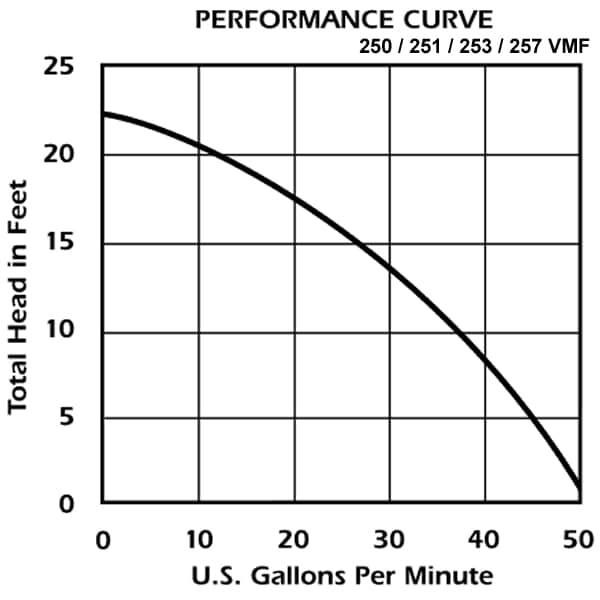
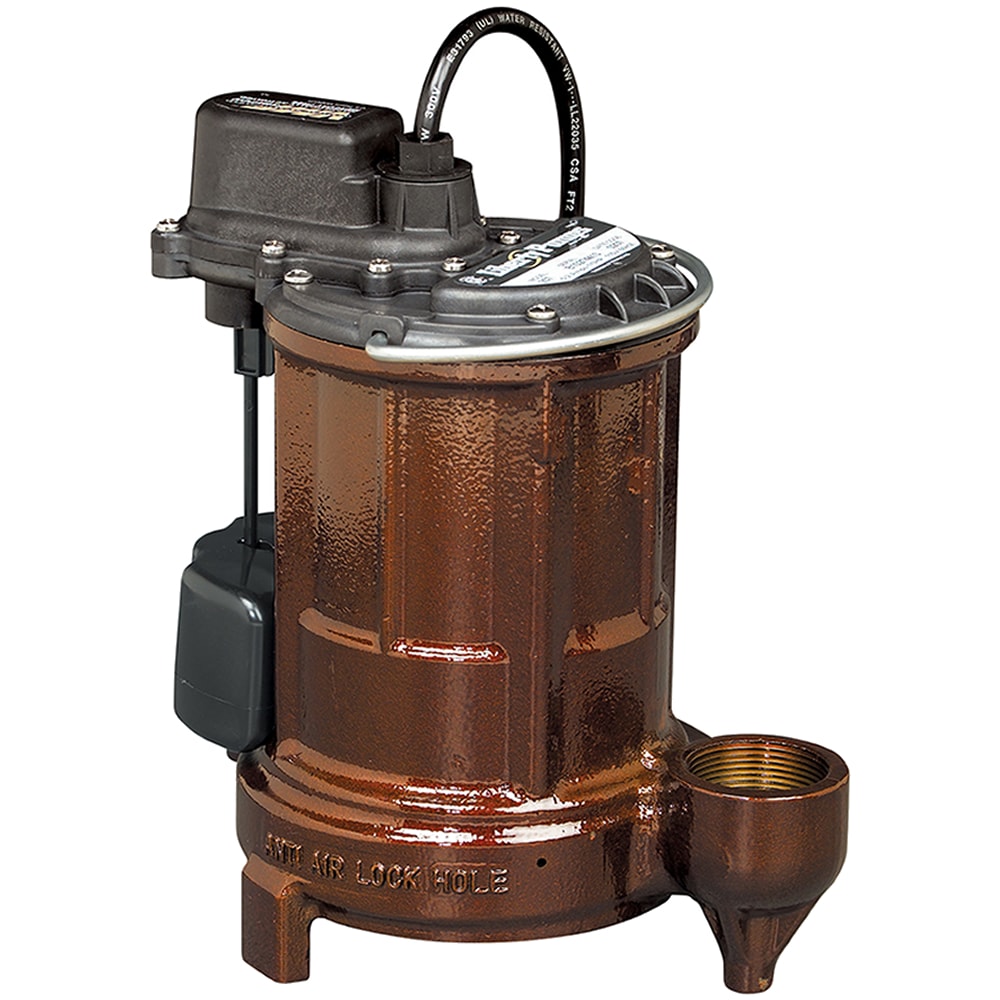 For most average-sized homes in areas with average water tables, a
For most average-sized homes in areas with average water tables, a 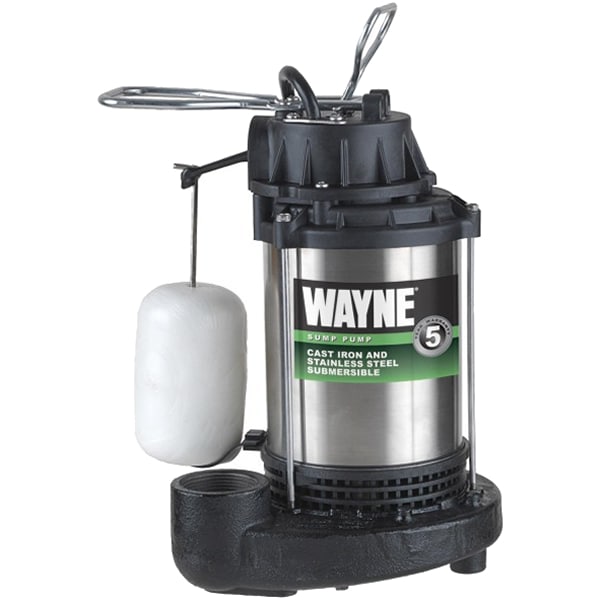 For people living in high water table areas, flood plains, low-lying areas susceptible to flooding, or have a deeper basement, you will likely need a stronger
For people living in high water table areas, flood plains, low-lying areas susceptible to flooding, or have a deeper basement, you will likely need a stronger 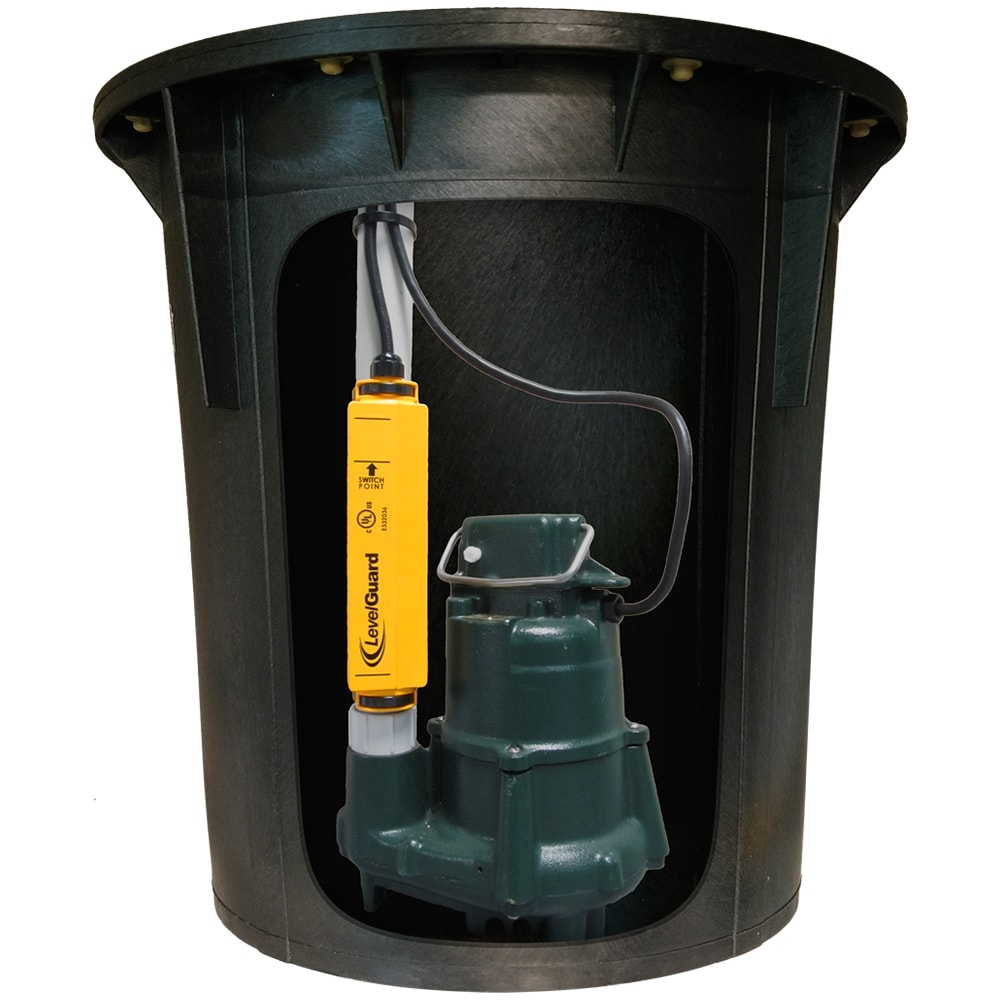 Most sump pumps will come with a
Most sump pumps will come with a 